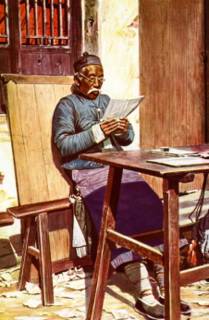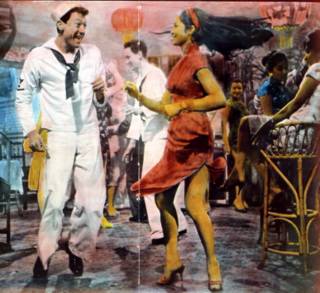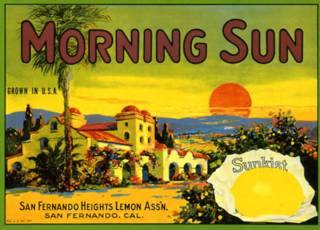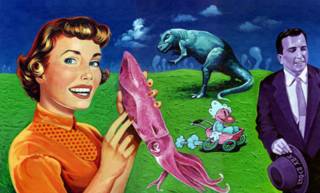
Moon
The Politics of Travel
WorldHum
Travel writers on the U.S. presidential election
10 . 27. 2004
* * * * * * * *
Pick up most American travel magazines and you wouldn’t know the United States was about to elect a president. Their focus remains, as ever, on Hawaiian vacations and the latest hot restaurants in Rome, Paris and Las Vegas. We’ve always thought it tough to separate politics from travel. In some cases, as in the debate over the U.S. ban of visits to Cuba, the two are directly related. More often, they overlap indirectly. Even if you’re seeking escape on a Mexican beach or an Alpine ski lift, you can’t close your eyes to the world around you -- and, like it or not, that world is affected by politics.
In light of the November 2 election, we’ve collected a number of recent quotes related to U.S. politics from leading travel writers who aren’t afraid to speak their minds, even at the risk of alienating some of their readers.
Rick Steves:
“Why don’t I just shut up and write my guidebooks? (As many people tell me — in ALL CAPS.) Three decades of people-filled travel and my personal faith have given me a passion for what I consider ‘the sanctity of life.’ While Conservatives claim to champion this issue, sanctity of life is about more than one issue. People around the world who love and respect what America stands for are hoping the American people will decide wisely on November 2. Since children, the world’s poor, and the environment can’t vote, it’s up to us to take these needs into account and vote for more than our immediate financial interest.”
-From Rick Steves’ Election Newsletter
Jonathan Raban:
“I think this is one of the worst periods American history has ever known. I think America is currently stuck with a terrifying administration, and I don’t understand why more Americans aren’t as alarmed...I think the Bush administration stands for something completely terrifying, particularly in relation to the rest of the world. Yes, its domestic policies are ghastly, the consequences of the Patriot Act are ghastly for Americans, but what is much, much more worrying is the emergence of America as the most loathed country on the face of the Earth, the country that’s seen as the dangerous bear, that’s distrusted by most countries, that appears to behave with a kind of petulance, a sort of adolescent quality about it that you wouldn’t believe a major power, the world’s last superpower, would be capable of.”
-From A Sense of Place: Great Travel Writers Talk About their Craft, Lives and Inspiration by Michael Shapiro
P.J. O’Rourke:
“[I]magine having a Democrat as commander-in-chief during the War Against Terrorism, with Oprah Winfrey as secretary of defence. Big hug for Mr Taliban. Republicans are squares, but it's the squares who know how to fly the bombers, launch the missiles and fire the M-16s. Democrats would still be fumbling with the federally mandated trigger locks.
One-time governor of insignificant Vermont Howard Dean wanted a cold war on terrorism. Dean said that we'd won the Cold War without firing a shot (a statement that doubtless surprised veterans of Korea and Vietnam). Dean said that the reason we'd won the Cold War without firing a shot was because we were able to show the communists ‘a better ideal.’
But what is the ‘better ideal’ that we can show the Islamic fundamentalists? Maybe we can tell them: ‘Our President is a born-again. You're religious lunatics - we're religious lunatics. America was founded by religious lunatics! How about those Salem witch trials? Come to America and you could be Osama bin Ashcroft. You could get your own state, like Utah, run by religious lunatics. You could have an Islamic Fundamentalist Winter Olympics - the Chador Schuss.’”
-From the London Telegraph
Peter Matthiessen:
“These people are lying and lying and lying and lying, the environment, the economy, Medicare, Iraq. They’ll do anything to get their errand boy back in office. George W. Bush is the errand boy for these interests and doesn’t seem the least bit curious about anything else. There’s a Bush hagiography which had one negative adjective in the whole book, perhaps the writer failed to realize how damning it was. ‘Incurious’ -- imagine the head of the free world being incurious. Our president wants to grow up to be a redneck. A redneck is not somebody who is ignorant, but somebody who is ignorant and proud of it. How tragic to have such a person as the head of the free world.”
-From A Sense of Place: Great Travel Writers Talk About their Craft, Lives and Inspiration by Michael Shapiro
Jeff Greenwald:
(In response to a question about whether the rest of the world should boycott travel to the U.S. to protest Bush administration actions)
“I think that a boycott of travel to the United States would be a very good idea, as long as the reasons are well defined. I think the actions of the Bush administration are incorrigible. They’re putting the entire planet at risk, they’re arrogant, and I think it would be good if the rest of the world stood up and said, no, we won’t put up with this. It would have to be over something that has global significance, like the U.S. refusal to sign the Kyoto Accords. And it also has to be realistic. It couldn’t be something like asking the U.S. to pull out of Iraq, because that’s driven by something far larger than even the people who vote in this country have the power to affect.”
-From Motionsickness
WorldHum on the Politics of Travel Writers





